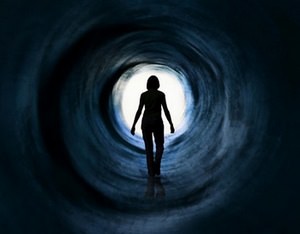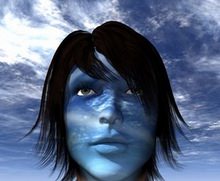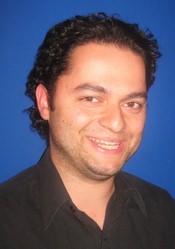The Phase State

I first found out about lucid dream induction when I discovered Robert Monroe in 2007. Shortly after, I came across Stephen LaBerge, Michael Raduga (whom I'd come to work with on research by heading the Phase Managing Department at the OOBE Research Center), and other experts.
Dealing with individuals from Raduga's School of Out-of-body Travel got me to frequently employ the umbrella term phase or phase state to refer to the hybrid state of mind that compounds wakefulness and dreaming - a condition that gives rise to lucid dreams, out-of-body experiences, false awakenings, sleep paralysis, and, as a number of experiments would demonstrate, the recreation of alien abductions, near-death experiences (NDEs), and other numinous encounters.
What is The Phase State?
The phase is a hybrid state of mind which incorporates both wakefulness and dreaming. The phase state doesn't always exist in the sense that the term "lucid dreaming" conveys because individuals who enter it don't always interpret or recognise that surroundings to be just a dream. (Some believe their consciousness has exited their bodies to either roam the physical world or perambulate in an astral plane of existence.)
In the phase, a person is able to lucidly experience their dreams and possess waking life memory. Experience in such state can be so realistic that an individual will often mistake it for wakefulness - not just in the case of false awakenings but also upon an intentional phase entrance.
But wait… Don't we mistake the usual non-lucid dreams for waking life? After all, a two-headed monster could be chasing us in a dream and such event is accepted as normality.
Here is where the phase differs. In the phase, that two-headed monster is recognised as an anomaly indicative of the illusory nature of what is being perceived.

Mindfulness is a hallmark of the phase state - besides the impression that you can obtain you are somewhere else apart from the sleeping body. The logical approach most commonly associated with wakefulness is operational in the phase and you can afford to be analytical about the immediate surroundings.
In the absence of lucidity, however, even if there is some consciousness in the dream, what's absurd is mindlessly taken to be true. So, the phase state encapsulates the nitty-gritty of what it means to be "awake" during your sleep.
What The Phase Encapsulates
It is also believed that the phase accounts for the majority of alien abductions (especially when these are closely related to sleep), and, bizarrely, near-death experiences.
In the case of NDEs, some neurologists postulate that a drop in blood pressure causes bursts of REM (rapid eye movement) activity in the brain. REM is a stage where most of our vivid dreaming occurs and where lucidity is likely to manifest.
The phase state, under normal conditions, can be voluntarily induced from wakefulness or dreaming: wake-initiated and dream-initiated lucid dreams (WILDs and DILDs).
Entering the phantom world of the phase from wakefulness can often involve the realistic illusion of separating from one's body. In fact, methods of "separation" are recommended if strange sensations arise and intensify (such as vibrations, sounds and imagery) while practitioners still perceive themselves to be in the body.
Due to the fact that lucid dreaming is a dissociative phenomenon, where one remembers that the physical body lies asleep in reality, it is sometimes referred to as an out-of-body experience (OOBEs or OBEs), or, in a more belief-centric interpretation, astral projection.
Probing The Illusion
But make no mistake about what goes on in the phase. Upon a perceived separation from the body, you will find that the environment you encounter is not the physical world.
The bedroom you see is more likely to be a mental simulation unconsciously generated by you from expectation and memory.

Look again and you might find that your bedroom may have more windows than it should, your TV might be missing, or the walls might be a different colour. The bed you have just moved away from is not an actual bed - it is a dream bed. The body that lies in bed, apparently asleep, is not your physical body - it is also a dream element.
Nothing in the phase is physically real even if it appears to be so. Even space and the distance between objects, which are brilliantly emulated, are not actual either.
What's more, everything that you perceive in the phase is manipulatable. You can feel the two-dimensionality of a painting on a wall by running your bare hands over its surface, and yet, you can also plunge into it and experience a painted landscape as a virtual world. Try it and see!
Pragmatically, phase states of the brain (as observed in EEG scans) are what seem to define full-fledged consciousness and self-awareness while dreaming. To deepen, maintain and manage the phase is to improve the quality of your lucid dream experience by intensification, prolongation and practicality.
Deepening
Deepening is one of the first things a practitioner should do upon phase entrance. This can be achieved by rubbing your hands together, touching objects, peering at them, palpating your dream body, keeping active, and amplifying all your senses in general. Engross yourself in the reality of the phase and bear in mind that sensory amplification is an important key for gaining clarity and time in the state.
How to Enter The Phase State
This is all about the induction of lucid dreams and / or out-of-body experiences. The phase can be entered before, during and after sleep.
The hardest way to enter the phase is before sleep. If you are going to enter the phase during sleep, by becoming lucid in a dream, then you better start recording your nightly adventures in a journal in order to improve dream recall, learn to recognise dream cues, and perform reality checks during the day.
Ask yourself the question "Am I dreaming?" and learn to answer it effectively. Can you remember what happened an hour ago? Do you remember getting up and having breakfast in the morning? How did you get to where you are? Can you levitate off the ground? Look at something, look away and then look back at it? Is it still the same or has it mysteriously changed? Perhaps its now missing! Look at your hands. Do they look normal?
Hyper Concentration Method
A way to check reality which is highly recommended by Michael Raduga is to perform the hyper-concentration method. This involves looking at something, like your index finger, for more than ten seconds and at a recommended distance of 4-6 inches from your face. Objects in the phase cannot withstand prolonged attention and may waver before going askew or exhibiting warped behaviour.
Last but certainly not least, we have entering the phase after sleeping. This is the way that definitely provides the sought after shortcut for the novice. Why? Because by having a nap or sleep prior to induction you are biologically priming yourself for the phase state later.
As you wake up, you can remain still and propel into the phase from the hypnopompic state. If this doesn't work and falling asleep occurs, you can always try the next awakening or even get up and keep active for a while in order to reduce the fatigue caused by sleep inertia.
When you go back down to enter the phase, you will find that you are able to relax easily and REM atonia will soon follow. The following doesn't have to be followed strictly but it may serve as an initial guide…
#1 - Relax
Lie down comfortably and close your eyes. Your eyes are to remain closed throughout the induction. Relax as deeply as you can and take your time. Be patient and don't rush it. Make sure that you are not disturbed. There are many books about the various effective techniques you can use to acquire a deeply relaxed state, but, because you have biologically primed yourself for the experience, it should be fairly easy for you to do so without having to read up on it.
#2 - Focus
It could be a mantra or a familiar object (the latter does not have to be visualised to perfection). Do this as you sense that you are drifting off to sleep or when your mind starts to wander. Keep bringing your mind back to focus whenever it gets lost. Keep still and relaxed and do not fall asleep! Focus on your "something" until you reach the hypnagogic state.
#3 - The Hypnagogic State
This is the state between waking and sleeping. You will know that you have reached this state once its imagery, or potential dreams, begin to invade your point of focus.
Being aware in this state is already an achievement. Prolong this state by passively watching its imagery, and, given the opportunity, jump into a dream scenario. Whatever sensations you experience here, attempt to amplify them as this will certainly get you closer to the phase.
If there are no images, then you may get auditory hallucinations. Listen in as you remain relaxed. You may experience paralysis and vibrations (or other strange sensations) may ensue. Keep calm, don't panic and bear in mind that nothing can harm you in this state.
#4 - Sleep Paralysis / Vibrational State
Let go of any worries relating to the physical body. The trick is to let your body "switch off" as your mind is still very much aware. This may involve resisting any urges to move or scratch itches. Your body will start to feel extremely heavy and there may come a point where you will be aware of not being able to move it. Remain relaxed nonetheless and don't panic.
Vibrations may or may not ensue. If they don't, then other sensations will. The vibrational state can be mild or strong. It can vary from tingling, warmth, and the sensation of low voltage electricity flowing through the body.
Strange sounds are reported during this stage. We know that the ear converts sound waves into signals that the brain can interpret through the firing of neurons. The Tensor Timpani muscle in the ear may cause rumbling as it spasmodically vibrates during sleep paralysis, and, the perception of vibrations could be feedback from neuronic activity at this stage.
The sensation of paralysis alone may occur when cells at the pons send inhibitory signals to motor neurons in the spinal cord, thus eventuating muscle atonia, which is necessary to prevent individuals from acting out their dreams. Amplify whatever sensation you are having before attempting to separate.
#5 - Separation
You can try partial separation first as practice before attempting full separation. Partial separation is optional.
There are many ways of achieving a successful disassociation from the body. For example, you can imagine that the ceiling above you is a huge magnet that counteracts gravity and pulls you upwards.
Alternatively, imagine yourself being catapulted or cannon-balled out of the body. Also, you can slowly roll over and out. The method of rolling over and out of the body is, in my experience, one of the most effective. Do this subtly and as though you are moving physically but without using muscles.
It is best to start by rolling over from the head as this causes the rest of the body to follow. If there is a perceived resistance, be forceful. This movement is not imagined, it is done with intent. Once you have succeeded, you will realise that you have moved incorporeally.
What Happens Next?
Once you are out, explore or carry out any plans that you may have. Try not to get overexcited and avoid fear and doubt. Stay out for as long as you can and don't worry about getting back, because you always do in the end.
A variety of experiences are open to interpretation. From inter-dimensional travel, space exploration, alien encounters, meeting strange spiritual entities, visiting the living and the dead, time travel, and so on.
Remember: whatever the nature of your experience and however profound it may be for you, try to look at it from a viewpoint free of preconceived ideas. For instance, seeing a luminous being who starts singing the most beautiful melody you have ever heard does not mean that you have just met an angel. Consider all perspectives.
Record your experiences in a journal. Feel free to carry out experiments of your own to try to determine the nature of your experiences for yourself as you bear in mind that anything in dreamland is possible...
Using The Phase State for Practical Ends
The following are examples of how the phase state may be beneficial:
Healing: Taking medicine in the phantom world of the phase can dupe your brain into "switching off" its pain receptors as the placebo effect is more prominent in such state. This is not guaranteed, however, and in extreme cases of illness, medical assistance must still be sought.
Self-integration and therapy: Facing your fears while lucid is a great psychological tool and offers opportunities for prolonged exposure to the phobic stimulus in a controlled environment.
Grieving: Contacting deceased loved ones regardless of whether you believe that they are real or realistically simulated can be an exhilarating and emotional experience of relief.
Dieting: In the phase, you can eat as much as you want and whatever you want without putting on weight. Food can taste as realistic as real and often much better as it's down to your expectation. This may aid a waking diet and alleviate feelings of privation.
Confidence and adroitness: In the phase many lucid dreamers have demonstrated the ability to hone existing skills, from practicing fine motor skills in surgery to perfecting a golf drive.
Pleasure without social constraint: Many people use the phase state to realistically fulfill sexual fantasies, from creating erotic scenarios to unrestricted experimentation.
Information and problem-solving: Accessing the unconscious mind reservoir provides the opportunity to think creatively without logical repression. This can give way to entirely new ideas and solutions.
Escapism and entertainment: The phase state affords us all the chance to visit exotic places and explore other worlds.
Artistic purposes: Lucid dreaming can generate new ideas at your request. Artists may summon landscapes at the whim of their unconscious self or enter portraits found in a dream art gallery.
There are many other uses for the phase state. The mind is the limit in the world of active imagination and if you want to reap the benefits mentioned above and much more - start practicing!
Appendix: States of Mind Terminology
Waking State: Also known as wakefulness. In this state, people perceive the physical realm. An individual who is awake is conscious, self-aware, and there is realism of perception. The environment is stable and there is no required effort to enter this state. The perceived world follows set rules, and, only on a quantum level, do things appear to be more uncertain.
Dream State: This entails non-lucid dreams and falling asleep is all that is needed to enter this state. Self-awareness is absent and the unconscious mind rules when a person dreams. The dreamer is mindlessly immersed in plots and often detached from waking life memories. The experience can be vivid or vague, and, despite the instability, the illogical appears to make sense. Certain techniques can be employed to boost dream recall.
Phase State: This entails out-of-body experiences (OOBEs or OBEs), and both wake-initiated and dream-initiated lucid dreams (WILDs and DILDs). They are all part of the same phenomenon as the phase state practitioner has the distinct sensation of being apart from the physical body. This elusive state can be entered before, during, and after sleep. Effort is required to enter the phase voluntarily, although, some experiences are induced involuntarily. The phaser is conscious and self-aware in what appears to be a phantom reality of a mental nature which often emulates the waking state. The phase can surpass waking experience in quality, and, although environments can appear stable, they can also transmute. It is possible to slip into the dream state from here and vice versa.

About The Guest Author
Arlindo Batista lives in London, UK. He experienced frequent false awakenings and lucid dreams as a child. He currently works as a bookmaker and is writing a book about lucid dreaming. He also enjoys being a freelance illustrator and artist, and has contributed dream-inspired art works to our Dream Art Gallery. An active member of our lucid dreaming forums, Arlindo takes a rational scientific approach to lucid dreams, out of body experiences and other phenomena associated born out of the phase state.
















